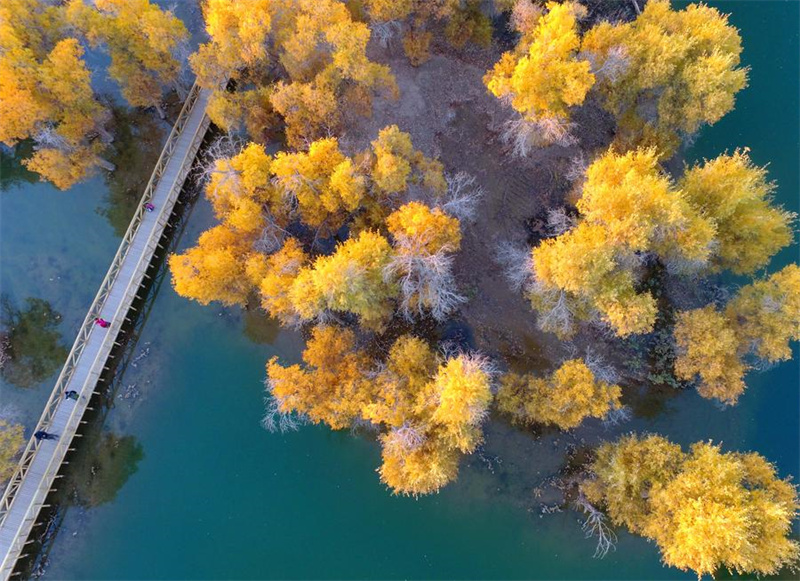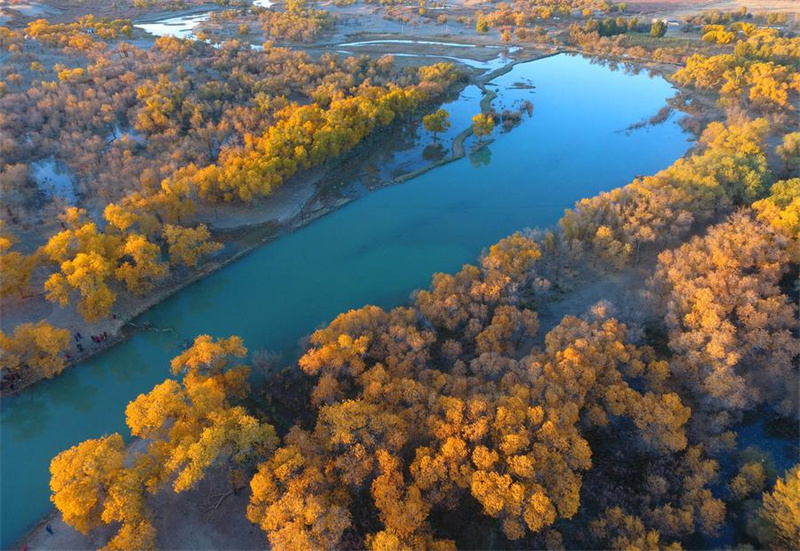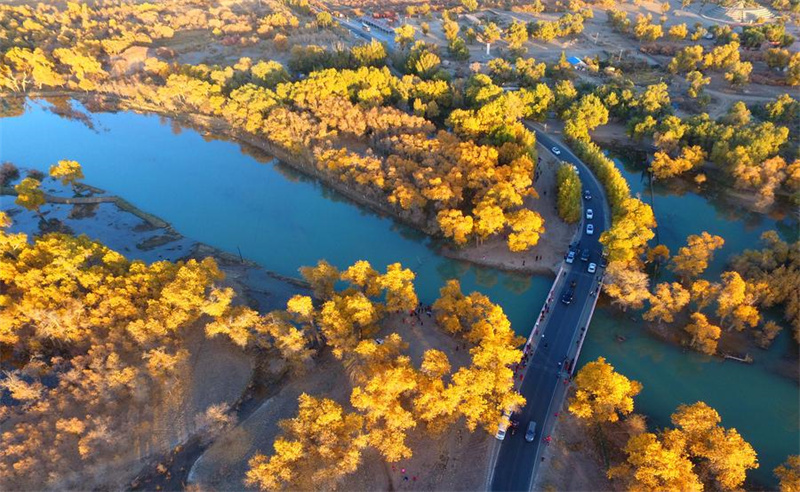Ejine Desert Poplar Forest
- (innermongolia.chinadaily.com.cn)
- Updated: 2022-08-04
The desert poplar forest in Ejine (Ejin) Banner is one of the three remaining populus euphratica forest reserves in the world. The scenic area integrates an assortment of landscapes including desert, Gobi, grassland, lake and forest.
Dalain Hob, the seat of Ejine, serves as an ideal base camp for touring the forests that surround the town, the densest of which are along the Ejine River. Eight bridges span the river, and the areas around the second, fourth and eighth bridges are the best places to photograph the golden foliage.
Populus euphratica, commonly known as the Euphrates poplar or desert poplar, is a species of poplar tree in the willow family. It is a bushy, deciduous tree whose trunk is often twisted and crooked. It usually grows in desert oases. Though it prefers wet climates, it is resistant to drought, cold, salinity, wind and sandstorms. There is a saying that describes its strong vitality: “Live for a thousand years until death; Stand for another thousand years until fallen; Exist for another thousand years until rotten.”
The Euphrates poplar is a medium-sized deciduous tree that may grow to a height of about 15 m and a girth of 2.5 m in favorable conditions. The stem is typically bent and forked; old stems have thick, rough, olive-green bark.
While the sapwood is white, the heartwood is red, darkening to almost black at the center. The roots spread widely but not deeply. The leaves are highly variable in shape. The flowers are borne as catkins, those of the male are 25 to 50 mm long, those of the female are 50 to 70 mm. The fruits are ovoid-lanceolate capsules, 7 to 12 mm long, containing tiny seeds enveloped in silky hairs.
Euphrates poplar forest has a very wide range of species, occurring naturally from North Africa, across the Middle East and Central Asia to western China.
It may be found in dry temperate broadleaf and mixed forests and subtropical dry broadleaf forests at altitudes of up to 4000 m above sea level. It is a prominent component of tugay floodplain ecosystems along river valleys in arid and semi-arid regions, mixed with willow, tamarisk and mulberry in dense thickets. It grows well on land that is seasonally flooded and is tolerant to saline and brackish water. Used widely as a source of firewood, its forests have largely disappeared or become fragmented over much of its natural range.
The species requires a lot of light for normal development. It is used in agroforestry to provide leaves as fodder for livestock, timber and, potentially, fibre for making paper. It is also used in afforestation programs on saline soils in desert regions, and to create windbreaks and check erosion.
Ejine poplar forest is most visited during October and November. If you go there at mid to end of October, you will still be able to see the leaves on the cottonwood, while a certain amount of leaves would already have fallen off. If you visit during November, most leaves will be shredded. Too early the cottonwood will still have green leaves and too late the deciduous trees will become marcescence or partial marcescences.

Photo taken on Oct 14, 2017 shows the desert poplar (populus euphratica) forest in Ejine Banner, North China's Inner Mongolia autonomous region. As temperatures drop, the desert polar forest turns golden-autumn, enticing hundreds of visitors to enjoy the natural beauty and endowment of the forest. [Photo/Xinhua]

Photo taken on Oct 13, 2017 shows the desert poplar forest in Ejine Banner, North China's Inner Mongolia autonomous region. [Photo/Xinhua]

Photo taken on Oct 13 shows the desert poplar forest in Ejine Banner, North China's Inner Mongolia autonomous region. [Photo/Xinhua]


